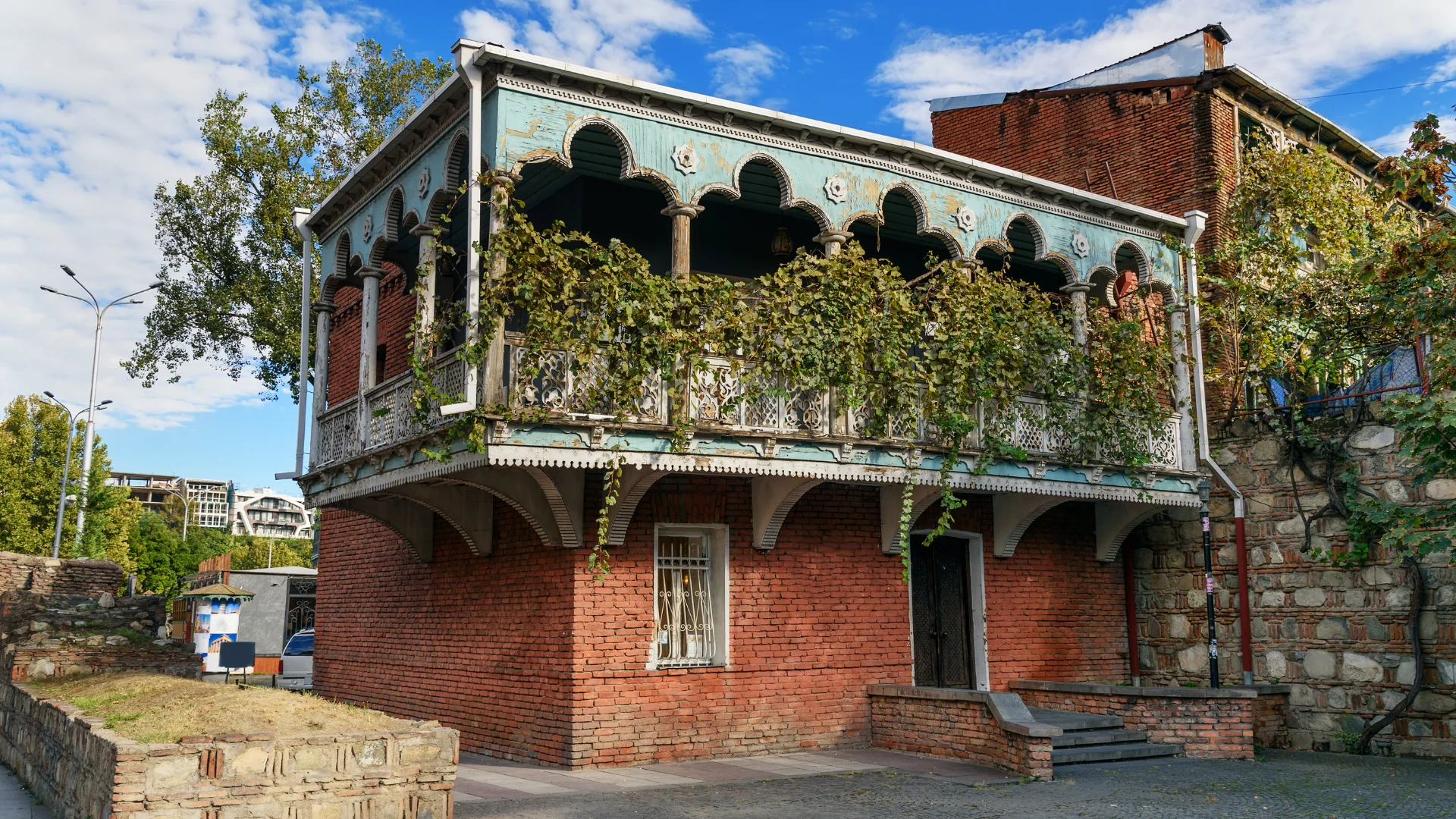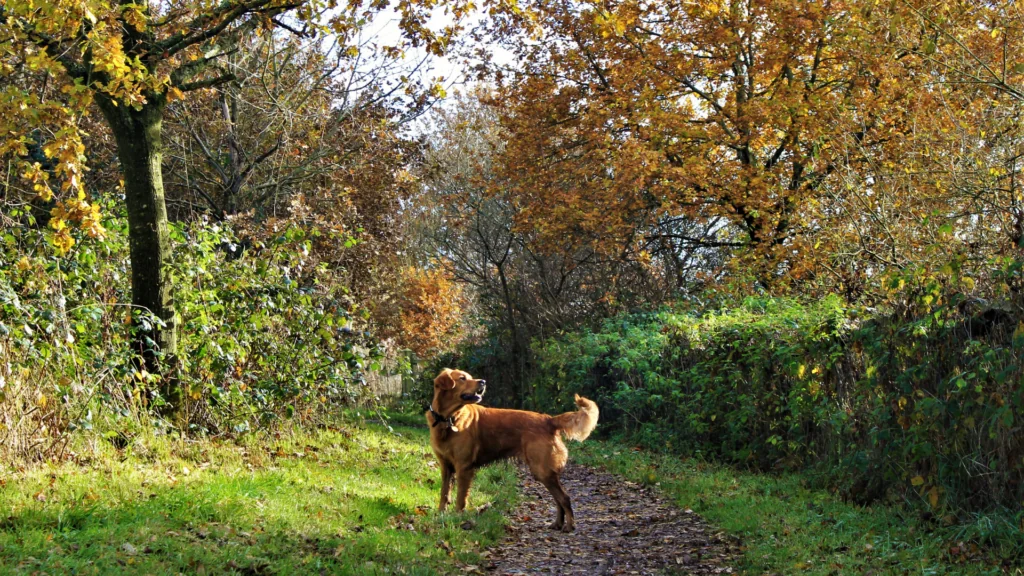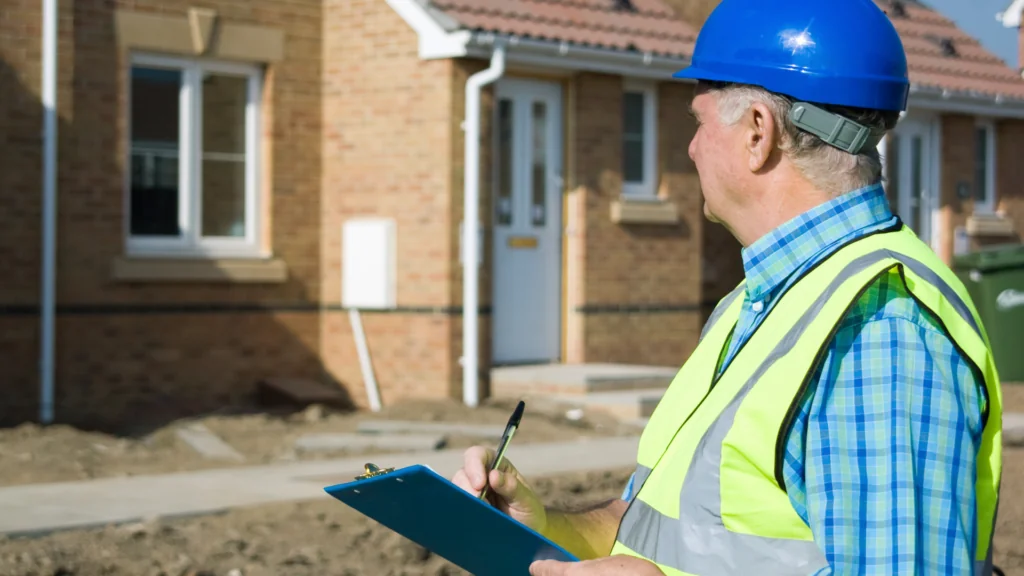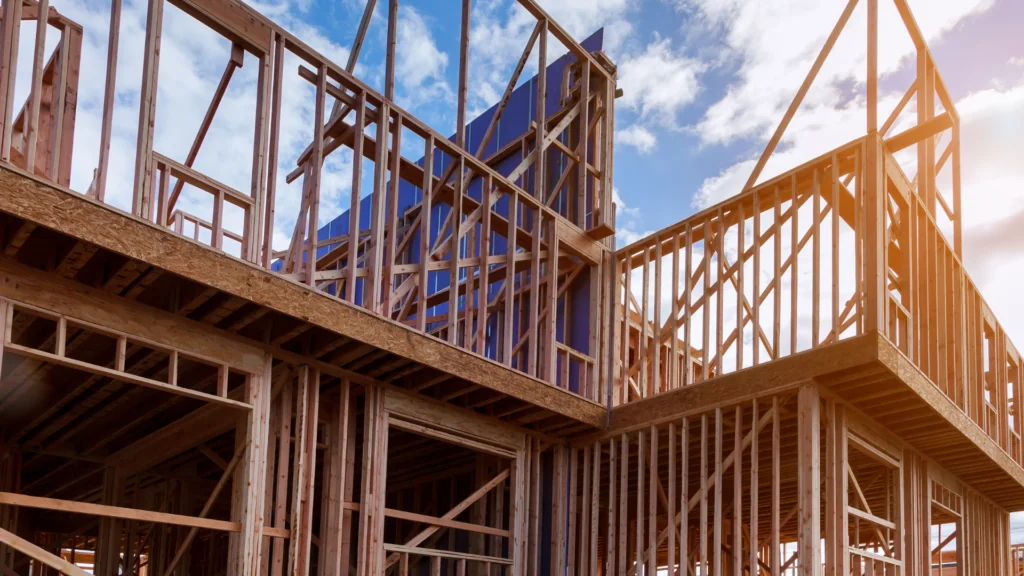- What is Japanese Knotweed?
- How Did Japanese Knotweed Come to the UK?
- How to Identify If My Property Has Japanese Knotweed?
- Can You Get a Mortgage for a Property with Japanese Knotweed?
- Why is Japanese Knotweed a Concern for Mortgage Lenders?
- How Lenders Assess Properties with Japanese Knotweed
- How To Get a Mortgage if Japanese Knotweed is Present
- Buy to Let Mortgages
- How Can You Remove Japanese Knotweed?
- Can You Remove Japanese Knotweed Yourself?
- Does Buildings Insurance Cover Japanese Knotweed Removal?
- How Does Japanese Knotweed Affect House Prices?
- Should You Buy a House That Previously Had Japanese Knotweed?
- Will You Be Able to Sell a Property Affected by Japanese Knotweed?
- The Role of Surveyors in Japanese Knotweed Valuations
- What are the Recent Trends and Changes in Mortgage Policies?
- Key Takeaways
- The Bottom Line
Mortgages and Japanese Knotweed: What You Need to Know

Japanese knotweed is one of those things that makes potential homebuyers and lenders shudder. This invasive plant has a bit of a bad reputation – and for good reason.
If you’re looking to buy or sell a property affected by it, you might be wondering if you can even get a mortgage.
The short answer? Yes, you can still get a mortgage. But it does require some extra steps.
In this guide, you’ll learn what Japanese knotweed is, how to deal with it, and what lenders expect. So you can improve your chances of securing a mortgage and make smart decisions.
What is Japanese Knotweed?
Japanese knotweed is a fast-growing, bamboo-like plant originally brought to the UK from Japan in the 1850s.
It was first introduced for ornamental purposes and to stabilise railway embankments.
But, it didn’t take long for this hardy plant to spread. And now it’s become a major headache for homeowners across the country.
You can find Japanese knotweed all over the UK, but it’s more common in certain areas.
It often shows up in urban spots like London, the Midlands, and parts of North West England, as well as rural areas in Wales.
It loves disturbed soils, which is why you’ll often see it along railways, riverbanks, and roadsides.
Knotweed has very strong roots that can cause serious damage to buildings, which is why it’s a big concern for both homeowners and mortgage lenders.
How Did Japanese Knotweed Come to the UK?
Japanese knotweed made its way to the UK in the 1850s, thanks to a German botanist named Philipp von Siebold who brought it over from Japan.
Initially, it was prized for its ornamental beauty and used to prevent soil erosion, particularly along railway embankments.
Unfortunately, its hardy nature and rapid growth led to it spreading uncontrollably, and it has since become a significant problem across the UK.
How to Identify If My Property Has Japanese Knotweed?
Spotting Japanese knotweed can be tricky if you’re not sure what you’re looking for.
During spring and summer, it grows very quickly, with reddish-purple shoots and large heart-shaped green leaves.
The plant also produces clusters of small white flowers.
If you’re unsure, it’s always a good idea to bring in a professional surveyor who knows exactly what to look for.
Can You Get a Mortgage for a Property with Japanese Knotweed?
Yes, you can.
While Japanese knotweed certainly makes things more complicated, many lenders are willing to provide a mortgage if certain conditions are met.
Typically, you’ll need a professional management plan to deal with the plant, along with an insurance-backed guarantee.
Why is Japanese Knotweed a Concern for Mortgage Lenders?
The main reason lenders worry about Japanese knotweed is the potential damage it can cause to properties.
The roots can push through concrete, damage drains, and undermine the foundations of a building.
This can, in turn, affect the property’s value and its marketability – not exactly what lenders want to hear if they’re providing a mortgage.
In some cases, if knotweed is close to the property but not directly on it, lenders might be more lenient, but they’ll still need to assess the risk carefully.
How Lenders Assess Properties with Japanese Knotweed
When it comes to Japanese knotweed, lenders need to be extra cautious, but don’t worry, it’s not all doom and gloom.
Just because there’s knotweed on the property doesn’t mean a flat-out ‘no’ from lenders. They just need to check a few things more closely.
Here’s what they look at:
- Proximity to the property – Lenders consider how close the knotweed is to the house. If it’s within 3 metres, it can be a dealbreaker unless there’s a proper treatment plan in place.
- Extent of infestation – The bigger the knotweed problem, the bigger the concern. A small patch is often less of an issue than a garden full of it.
- Presence of a treatment plan – Lenders need to know that knotweed is being managed properly, usually with an insurance-backed guarantee covering treatment for several years.
- RICS Risk Categories – Properties are assessed based on the risk categories set by the Royal Institute of Chartered Surveyors (RICS). These categories help surveyors figure out how serious the knotweed problem is and guide lenders on the level of risk involved.
- Loan-to-value (LTV) ratio – Lenders might require a lower LTV ratio for properties with knotweed, usually around 75-85%. This means you may need a larger deposit to get the mortgage.
- Proof of ongoing maintenance – Beyond the initial treatment, lenders may want proof that you’ll keep up with maintenance to make sure the knotweed doesn’t come back or spread.
- Higher deposit requirements – Some lenders might ask for a bigger deposit, often around 20-30%, to reduce their risk. This shows them that you’re committed to dealing with the issue.
How To Get a Mortgage if Japanese Knotweed is Present
The good news is that a mortgage is possible, even if knotweed is found. You’ll need to engage a professional to carry out a survey and develop a treatment plan.
This plan should include steps to manage the knotweed and prevent it from spreading.
Most lenders will also want an insurance-backed guarantee – something that covers you (and them) if the knotweed comes back.
Working with a mortgage broker who understands the ins and outs of knotweed can also be a smart move to help navigate through lender requirements.
Buy to Let Mortgages
If you’re applying for a buy-to-let mortgage, Japanese knotweed can make things a bit more difficult.
Lenders are usually more cautious with buy-to-let properties since you won’t be living there.
If the property is in a high-risk category for knotweed, you might need to pay a higher interest rate or put down a larger deposit, typically 25-35%.
Again, having a solid treatment plan is key.
How Can You Remove Japanese Knotweed?
Getting rid of Japanese knotweed is tough, and it’s not a job you can handle with just a bit of DIY gardening.
You need professional help because the roots can be incredibly deep and tough to remove.
The most common method involves using herbicides, usually applied over several years to make sure the roots are completely treated.
Professionals have access to stronger herbicides that can speed up this process.
The cost for herbicide treatment is usually between £1,000 and £3,000, depending on the size of the problem.
In more severe cases, you might need to completely excavate the knotweed.
This involves digging out the plant and its roots, which can grow several metres deep.
Excavation is more costly, ranging from £5,000 to £20,000, depending on how severe and large the infestation is.
You also need proper disposal at licensed landfill sites, as knotweed is classed as controlled waste.
It’s important to get an insurance-backed guarantee for knotweed treatment.
This gives lenders and future buyers confidence that if the knotweed comes back, further treatment will be covered without extra cost.
Most lenders need a guarantee of 5 to 10 years before approving a mortgage.
Hiring a professional who is a member of the Property Care Association (PCA) or the Invasive Non-Native Specialists Association (INNSA) is the best course of action.
They can ensure the knotweed is properly treated and provide the guarantees that mortgage lenders require.
Can You Remove Japanese Knotweed Yourself?
Technically, you could try, but it’s really not recommended.
Knotweed is not just any garden weed. It has deep roots, and trying to remove it yourself can make it spread even more.
Plus, if you don’t manage it properly, you could end up with legal issues. It’s much safer to get a specialist who knows what they’re doing.
Does Buildings Insurance Cover Japanese Knotweed Removal?
In most cases, no.
Buildings insurance generally doesn’t cover the cost of removing Japanese knotweed. It’s considered a maintenance issue, so the cost falls to the homeowner.
It’s definitely worth checking your policy though, as some might offer limited coverage, but don’t hold your breath.
How Does Japanese Knotweed Affect House Prices?
It’s safe to say Japanese knotweed can be a real downer on house prices. It’s not that buyers are necessarily terrified of it, but it does mean extra work and expense.
Depending on the severity, properties with knotweed can lose up to 15% of their value.
The key is having a professional treatment plan in place – that way, buyers can feel reassured that it’s being dealt with.
Should You Buy a House That Previously Had Japanese Knotweed?
If a property previously had knotweed, it doesn’t mean you should automatically walk away.
As long as there’s proof that it was treated properly and an insurance-backed guarantee is in place, it might not be as big of an issue as you think.
Just make sure all the paperwork is in order, and maybe have a good chat with your surveyor to get their opinion.
Will You Be Able to Sell a Property Affected by Japanese Knotweed?
Yes, you can sell a property with Japanese knotweed, but you need to be upfront about it.
Full disclosure is key, and in fact, it’s a legal requirement.
According to the Property Misdescriptions Act 1991, sellers must inform potential buyers if Japanese knotweed is present or has been treated.
Buyers will want to know what’s been done to fix the problem and see proof of treatment.
Having a management plan and a guarantee can make a huge difference in how easy it is to sell your property.
The Role of Surveyors in Japanese Knotweed Valuations
Surveyors are important when checking houses with Japanese knotweed. They assess how bad the problem is and if it could damage the building.
A surveyor’s report can influence a lender’s decision. So, it’s best to choose a surveyor who knows a lot about Japanese knotweed.
What are the Recent Trends and Changes in Mortgage Policies?
In recent years, lenders have become more relaxed about knotweed and mortgages.
The updated RICS guidelines from 2022 now let surveyors use their own judgement instead of strictly following the old ‘7-metre rule’.
This means they look at the actual risk that knotweed poses rather than just how far it is from the property.
The old ‘7-metre rule’ was a big deal – if knotweed was within 7 metres of a property, lenders would often say no.
Now, surveyors take a more balanced view.
Instead of sticking to a strict rule, they look at the specific conditions of the property, the type of foundations, and the real risk from the knotweed.
This means properties that might have been turned down in the past could now be considered for a mortgage.
Lenders are now more willing to provide mortgages for affected properties, as long as there are proper measures in place.
It’s all about showing that you’re taking the right steps – having a solid plan, a guarantee, and maybe even a friendly surveyor who knows their stuff.
It’s still a good idea to shop around and get advice from a broker who knows which lenders are more likely to say “yes.”
Mortgage policies can vary a lot, and having an experienced broker on your side can really help.
After all, you don’t want to go through all that effort just to get a “no” at the end.
Key Takeaways
- Japanese knotweed can make getting a mortgage tricky, but it’s not impossible. You’ll need a treatment plan and an insurance-backed guarantee.
- Lenders have different levels of caution, and working with a knowledgeable mortgage broker can make the process smoother.
- Removing knotweed is best left to the professionals, and buildings insurance usually doesn’t cover the cost.
- Knotweed can affect house prices and saleability, but a proper treatment plan can help reassure buyers and lenders alike.
The Bottom Line
Japanese knotweed is a hassle, there’s no denying that. But it doesn’t mean you can’t get a mortgage or sell your property.
The key is in how you deal with it – being upfront, getting the right surveys, and having a treatment plan in place.
If you’re buying a property with knotweed, just make sure all the right boxes are ticked, and you’ll be able to move forward.
To get started on your journey, contact us. We’ll connect you with a skilled mortgage broker who can guide you through the process and help you secure the best possible deal.
Get Matched With Your Dream Mortgage Advisor...

Frequently asked questions
Can I get a mortgage if the neighbour has knotweed?
Yes, but it depends on how close it is to your property and whether your neighbour is dealing with it properly. A surveyor will assess the risk.
Who pays for Japanese knotweed removal?
Typically, the homeowner is responsible for the cost of removal. If it’s coming from a neighbouring property, you might be able to share costs, but it’s best to discuss it with them.
What can Japanese knotweed do to a house?
Japanese knotweed can cause significant damage if left unchecked. It can grow through concrete, damage drainage systems, and undermine foundations – not exactly what you want from a garden guest!




